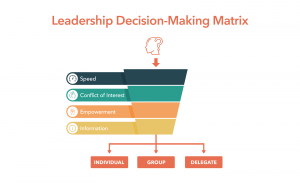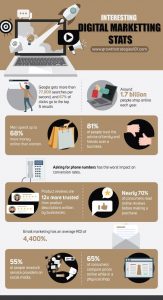
Many new data-driven, targeted, marketing techniques are now possible, but recent evidence suggests that some may actually do more harm than good.
Developing a simple and effective digital communications strategy isn’t easy. Getting it right requires the leadership of a business having a clear understanding of customers’ needs, the experience they want to create and the steps required to get there. For many businesses this process will take time. To do it well they need to focus on the long-game. However, the pressure of short term performance reporting and demonstrating “quick wins” distracts businesses from the longer term, more strategic view.
An example of this is the current reliance on behavioral targeting. Most of us have had the experience of searching online for a product or a service, visiting a company’s website and then being bombarded with advertisements from that company. This is behavioral targeting. It gives advertisers the ability to target and personalize messages to consumers based on browsing history and demographic information. It’s now very cheap and easy for businesses to collect and track this type of information and use it to drive short term activity.
But a new paper from Stanford Graduate School of Business Professor Pedro Gardete and Yakov Bart, a professor at Northeastern University, has found that highly targeted and personalized ads do not translate to higher profits for companies. Their research shows that consumers find those ads frustrating and eventually meaningless.
The research used game theory to build a mathematical model that enabled them to look at the impact of a variety of advertising scenarios. It shows that in many cases the most effective strategy for consumers is to keep information private and for businesses to track less of it. As Gardete says: “It might seem counterintuitive to say to a business, ‘collect less data and disclose it,’ but being open about what data a company collects is actually to its advantage.”
The insights from this research suggests that many businesses should rethink their digital strategy and tactics.
When we are talking to clients and marketing professionals we describe the approach discussed above as the treadmill of creating “smarter and smarter spam”. It might work for a short period of time but eventually it will erode brand trust.
The only real way of creating true competitive advantage in the digital world is to focus on generating long-term trust with your customers. Companies need to focus on what customer data they really need and, importantly, how they are going to use it to deliver value back to the customer.
It also means that those responsible for shaping and driving digital change need to be freed up from the demands of quarterly sales reporting. Leadership should allow them to develop a long term vision but insist on setting the KPIs that they will hit along the way.
Some suggestions to help sell-in a long-term strategy are:
- Develop a clear customer centric financial model
- Demonstrate which techniques will positively impact that model in short and long terms
- Clearly show where the risks lie (many of the techniques that will provide a short term gain may present great long term risks)
- Map out a staged “maturity model” that creates a narrative that stakeholders can support
- Report on progress frequently
The world has changed. Now is the time to be bold. Focus on the customer. Design for the long term. And remind your management team to resist the temptation of chasing “quick wins” that erode the trust of your customers.
Digital & Social Articles on Business 2 Community(70)








